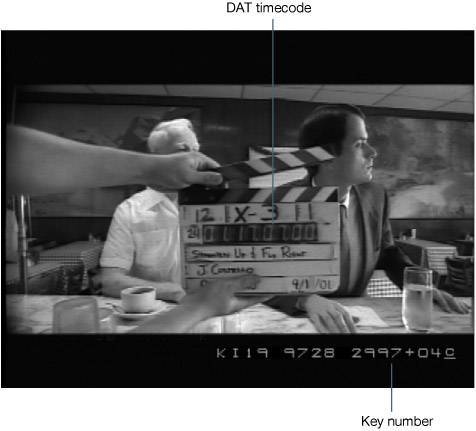Offline Editing
| When you edit using an offline workflow, you use low-resolution media to create effects and re-create that effect prior to the final output. Typically, an offline project will include captured material at a relatively low resolution. Prior to final output, you will either recapture the media from at a higher resolution (for SD/HD video projects), or you will conform the negative to match the edited sequence in Final Cut Pro (for film projects). In an offline project, every frame of low-resolution media represents a frame of the original source media. Since you will need to refer back to the original source media at the end of the project, tracking and maintaining the links between the low-resolution media and the original source media is vitally important. For offline video projects, you maintain the links between the low-resolution media and original media by using timecode. For offline film projects, you maintain the links through a database in Cinema Tools by using the film's edge numbers, key numbers, and timecode. (See Lesson 4 for more information on film.) Note A conform refers to the final step in the editing process, where a project is completed in the final resolution. For example, after a film is edited in Final Cut Pro, you will export film lists for a negative cutter to "conform" the negative. Window burn showing timecode of current clip Window burn showing film key number. DAT timecode is on clapboard. The primary principle in designing an offline workflow is that all media in the system must have a one-to-one correlation to the original source mediabe it a frame of video or a frame of film. Your primary task is to maintain the link to your source media because the delivery of your project depends on that link being accurate. So when designing an offline workflow, you will need to be especially careful about capturing the original source media in Final Cut Pro in an accurate manner. In an offline workflow, you can spend less time concentrating on how the image looks, provided you maintain the link between low-resolution media and the original source media. For example, in an offline workflow project, since you are using low-resolution media, a dissolve or color correction that you create in Final Cut Pro will not necessarily reflect how it will look in the final high resolution. Since you are using low-resolution media, any effects or color corrections you create during the creative editing are essentially visual guides and will be used as a reference for the final conform. Your effects or color corrections created with low-resolution media will ultimately need to be either tweaked or re-created during the finishing process. |
EAN: N/A
Pages: 205

